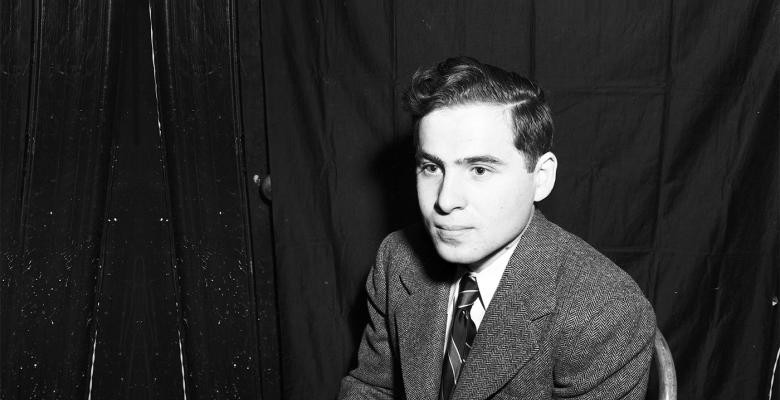
Columbia Archives
When it comes to scientific discoveries, physicist Arthur Ashkin CC’47 is a man of many accomplishments. He was the first to observe optical gradient forces on atoms, the first to perform laser cooling of atoms and the first to observe optical trapping of atoms. With his colleagues, Ashkin also became the first to observe continuous wave laser harmonic generation and parametric amplification, the first to discover the photorefractive effect and first to initiate the field of nonlinear optics in optical fibers.
On October 2, Ashkin added another first to his list: the first 96-year-old to receive a Nobel Prize, making him the oldest recipient. His notable scientific career might have earned him the title of "father of laser radiation pressure,” but when he won the Nobel for his groundbreaking invention of “optical tweezers,” which use lasers to trap and manipulate tiny particles in beams of light, he simply referred to himself in an interview with NJ.com as “an old geezer.”
The Brooklyn, N.Y., native studied physics at the College. His research was threatened by WWII and he was drafted, but kept on reserve. He became a technician at the Columbia Radiation Lab and was there from 1942 to 1945, working on technology for U.S. military radar systems under Professor I.I. Rabi, winner of the 1944 Nobel Prize in Physics. Ashkin earned a Ph.D. in nuclear physics from Cornell and was a researcher at AT&T Bell Laboratories from 1952 to 1991.
He began to experiment with lasers after their invention in the 1960s. His idea: to manipulate particles using light. "When I described catching living things with light people said, ‘Don’t exaggerate, Ashkin,’” he said in an interview with NobelPrize.org. He discovered that small translucent particles could, in fact, be pushed by the light of a laser beam. Two beams would be needed to hold the particles in place, fashioning the invention of the “optical tweezers,” which could control cells, viruses, proteins and atoms.
Robert Mawhinney, chair of Columbia’s physics department, lauded Ashkin’s Nobel in an article with Columbia News: “Optical tweezers have allowed us to manipulate material from the size of atoms to the larger, but still microscopic, components of living organisms,” he said. “Such a capability was not in anyone’s mind, except perhaps his, when he ventured into the Columbia Radiation Lab in the 1940s as a talented undergraduate, ready for his first exposure to research at the boundaries of human knowledge. He has spent his career moving that boundary forward and we applaud his success.”
At his home laboratory, Ashkin is experimenting with solar ray research for heating and other applications. He joins a list of 30 Nobel laureates in physics associated with or educated by Columbia.
